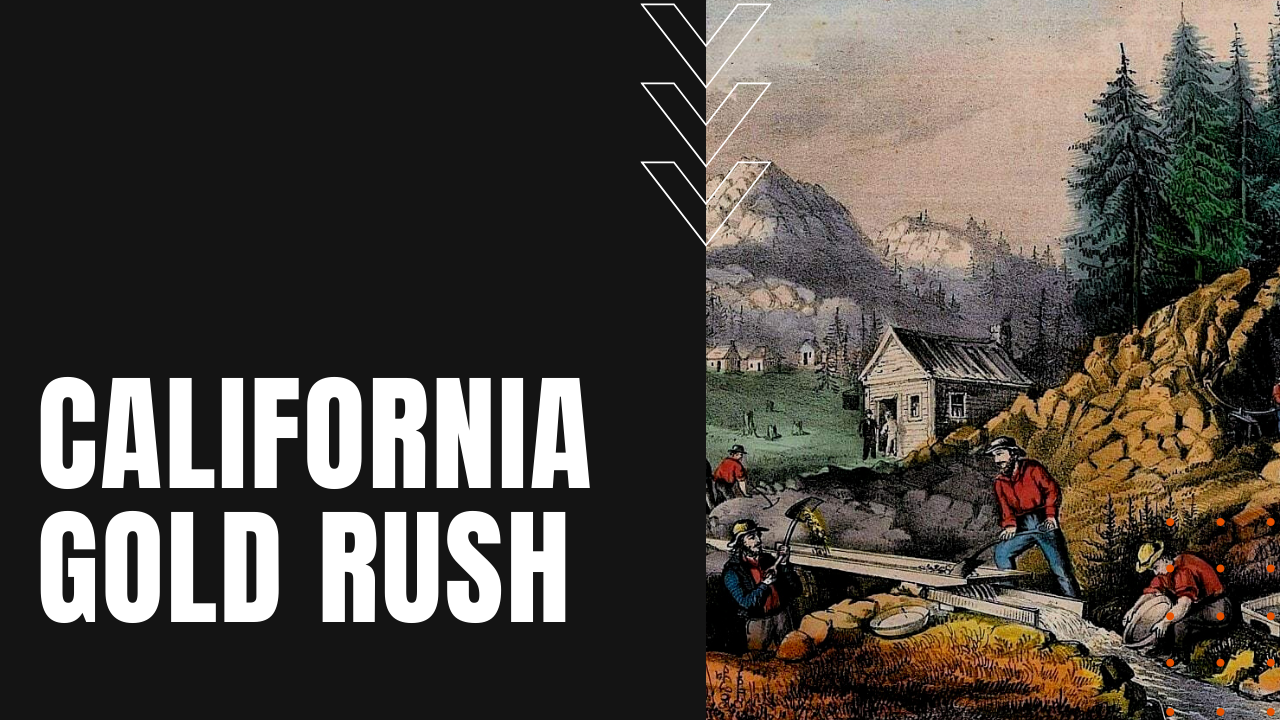California Gold Rush: Forty-Niners, Fortunes, and Frenzies

On January 24th, 1848, James Wilson Marshall, a carpenter originally from New Jersey, found flakes of gold in the American River at the base of the Sierra Nevada Mountains near Coloma, California. At the time, Marshall was working to build a water-powered sawmill owned by John Sutter, and as Marshall later recalled of his historic find:
“It made my heart thump, for I was certain it was gold.”
James Wilson Marshall
Though Marshall and Sutter tried to keep news of the discovery under wraps, word got out, and by mid-March, at least one newspaper was reporting that large quantities of gold were being turned up at Sutter’s Mill. By mid-June, some three-quarters of the male population of San Francisco had left town for the goldfields, and the number of miners in the area reached 4,000 by August.
Forty-Niners Head West
As news spread back east, potential fortune seekers remained skeptical at first, until President James K. Polk addressed a report by Colonel Richard Mason, California’s military governor. “The accounts of abundance of gold,” Polk wrote, “are of such an extraordinary character as would scarcely command belief were they not corroborated by the authentic reports of officers in the public service.” After Polk’s pronouncement, the race was on in earnest, as mostly male fortune seekers borrowed money, mortgaged their properties or spent their life savings to make the arduous journey west. Thousands of would-be gold miners, known as ’49ers, traveled overland across the mountains or by sea, sailing through Panama or even around Cape Horn, the southernmost point of South America. By the end of the year, the non-native population of California was estimated at 100,000 people, compared with 20,000 at the end of 1848 and around 800 at the beginning of ’48.
To accommodate the needs of the ’49ers, gold mining towns sprang up across the region, complete with price-gouging shops, saloons, brothels and other businesses seeking to make their own Gold Rush fortunes. The overcrowded chaos in the mining camps and towns grew ever more lawless, including rampant stealing, gambling, prostitution and violence.
Gold Mining Goes Industrial
After 1850, the surface gold in California had largely been exhausted, even as would-be fortune seekers continued to arrive. As gold became more and more scarce on the surface, the growing industrialization of mining drove many fortune seekers from independence into hourly wage labor.
The new technique of hydraulic mining, developed in 1853, brought enormous profits to mine owners but destroyed much of the region’s landscape in return. Though gold mining continued throughout the 1850s, it had reached its peak by 1852, when some $81 million was pulled from the ground, leveling off to around $45 million per year by 1857.
Settlement in California continued, however, and by the end of the decade, the state’s population topped out at 380,000 non-native Americans, making the California Gold Rush a steady driver during America’s push for westward expansion.
